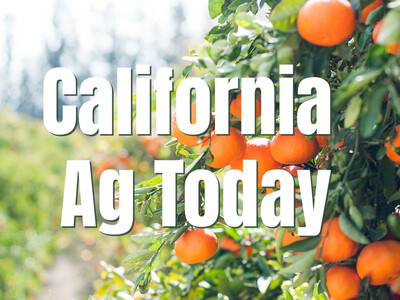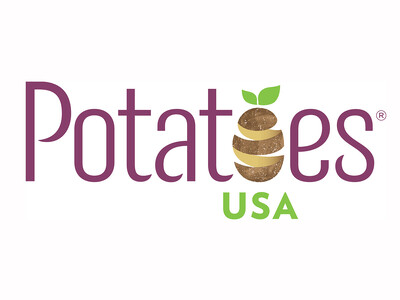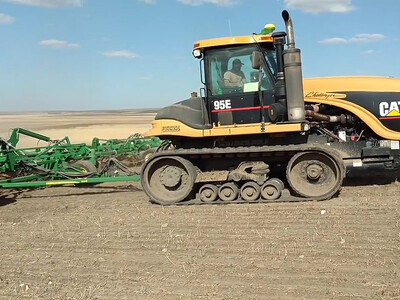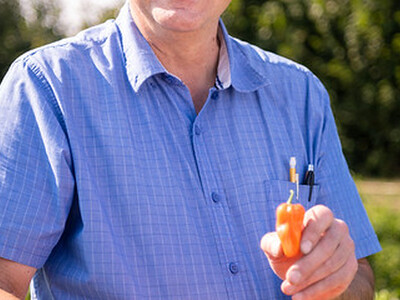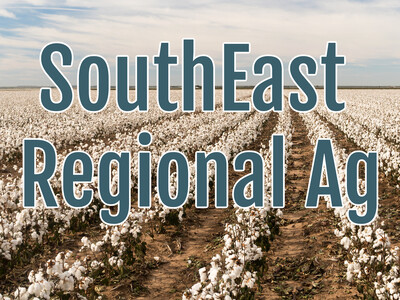Farmer revenue down
Farm-level prices for many of the state’s top agricultural commodities have softened from record or near-record levels last year.But overall farm production costs have held steady for many of the state’s ag producers.
This has created some headwinds for the 2023 growing season and could squeeze profitability for many of Idaho’s 25,000 farms and ranches.
For example, Idaho’s dairy industry, the state’s No. 1 ag commodity in terms of total farm-gate revenue, received record-high milk prices in 2022 that were enough to offset record production costs.
This year, milk prices have headed downward but overall dairy expenses haven’t followed suit.
“On the income side, we’re seeing (things) ease a bit,” said Idaho Dairymen’s Association Executive Director Rick Naerebout. “But on the cost side, we’re not seeing those same easing factors.”
Feed costs, a dairy’s biggest expense, have not budged from last year’s record level, he said.
“More normal milk prices against record high feed costs are not a good situation for a dairy,” Naerebout said.
As a result of the current costs vs. income scenario most Idaho dairies are facing this year, he added, “We project negative margins for at least the first three quarters of the year.”
According to a recent Market Snapshot report by AgWest Farm Credit, the 12-month profitability outlook for dairies in the Northwest suggests break-even returns.
“Dairies will face headwinds from continued elevated feed costs, tight forage supply and weaker milk prices,” the AgWest report states. “In 2022, record (milk) prices supported dairy producers. Now, elevated production costs and lower milk prices are squeezing dairy profitability.”
AgWest, part of the 107-year-old Farm Credit system, is a financial cooperative with $30 billion in total assets that provides financing and related services to farmers, ranchers, agribusinesses, rural homeowners and crop insurance customers primarily in seven Western states.
According to estimates by University of Idaho economists, Idaho farmers and ranchers brought in a record $11 billion in farm-gate revenue in 2022.
But the U of I economists also estimate the state’s ag producers had a record $8.9 billion in total expenses last year as well.
Heading into the 2023 season, total revenue is expected to drop as farm-level prices head downward. But expenses aren’t budging much, if at all, from their record levels.
“(Expenses) are not going up a lot like they were the last few years but they’ve not going down either,” said Ben Eborn, owner of North American Potato Market News.
Open market potato prices right now are good and they’re climbing higher, he said. Whether they’ll be enough to cover record production expenses is an unknown at this point in the year, he added.
“I think it all depends on yields,” Eborn said. “Production is the wild card right now.”
Eborn said the late start to planting this year due to cold weather could be a factor in how yields ultimately turn out.
“Growers are concerned that the late start and cold temperatures could hold back yields for the 2023 crop,” he wrote in the April 6 edition of North American Potato Market News.
On May 3, Eborn told Idaho Farm Bureau Federation there is still plenty of time for Idaho spuds to catch up and flourish if the state has a normal growing season in 2023.
This winter’s great snowpack means water availability won’t weigh on spud farmers’ minds in 2023 like it did in 2022, the Market Snapshot report states.
“While strong demand is expected for the new crop, rising input costs weigh on producers’ profitability,” the report states.
“Potato growers should prepare for heightened production costs,” the report adds. “Still, demand for potatoes is expected to be strong and higher prices will help sustain production in the face of increased expenses.”
North American Potato Market News projects potato acres in Idaho will total 305,000 in 2023, up from 295,000 last year.
Potatoes are Idaho’s top crop in terms of total revenue and rank as the state’s No. 3 agricultural commodity, behind dairy and cattle and calves. Ranking Nos. 4-7 are hay, wheat, sugar beets and barley.
The AgWest report suggests profitable returns this year for cow-calf producers.
“The U.S. beef cow herd is at a record low, resulting in higher cattle and beef prices,” the report states. “National beef supplies will remain low until at least 2025, and producers can expect elevated feeder cattle prices.”
“Higher fed cattle prices and sizeable export volumes will create tailwinds for producers’ profitability,” the report adds.
The AgWest report is also forecasting profitable returns for small grains, which include wheat and barley.
USDA’s National Agricultural Statistics Service estimates Idaho wheat acres will total 1.2 million in 2023, up 3 percent from last year, and Idaho farmers will plant 590,000 acres of barley, up 5 percent from 2022.
The report notes that overall national farm production expenses increased by 18 percent in 2022, the largest annual increase on record.
While fertilizer and fuel prices have declined from record highs last year, those decreases “are outpaced by inflation and increases to all other expense categories.”
“Small grain producers are in a solid financial position and while wheat prices are expected to be down from 2022 record highs, prices are still profitable,” the AgWest report states. “The key to determining how much profit wheat producers make [this year] will be their ability to manage production costs.”
North Idaho farmer Bill Flory said the cost of production for wheat farmers in his region is currently in the mid to high $5 per hundredweight range.
“That cost structure hasn’t adjusted with the change in commodity prices,” he said. “I’m definitely concerned about the drop in prices.”
“I’m a little bit concerned about the cost structure,” he added. “It’s not going to be quite as easy as it was last year when it comes to our cost of production vs. grain prices.”
Ag West’s outlook expects slightly profitable returns for alfalfa hay producers in the Northwest this year and break-even returns for timothy hay producers.
NASS forecasts that Idaho hay acres will total 1.37 million this year, down 3 percent from last year.
The AgWest report says Idaho dairies are operating with limited hay inventory, expecting more affordable hay prices with the new crop.
“With dairies carefully managing all expenses, hay growers can expect continued hesitancy from dairies when purchasing hay,” the report states … “Hay prices will soften from 2022 records, and the spread between feeder and dairy quality hay prices – which narrowed in 2022 – will widen.”
“Softening hay prices and historically high production costs challenges hay growers’ profitability, but most are still expected to make decent money [this year],” the AgWest report adds … “However, timothy hay growers may face lower prices due to built-up inventories and weakening trade demand, which will pressure prices and profits.”
The AgWest forecast expects slightly profitable returns for sugar beet farmers.
NASS estimates sugar beet acres in Idaho will total 175,000 in 2023, up 1 percent from 2022.
“Improvements in moisture conditions from snowpack will benefit sugar beet production,” the AgWest report states. However, it adds, “High production costs will squeeze beet growers’ cash flow.”
The report notes the sugar market depends heavily on marketable prices and higher domestic sugar prices will support producer payments.
“The domestic sugar price outlook is bullish as anticipated reductions in sugar beet and cane acres [nationwide] will limit supplies, therefore supporting higher prices,” the report states.






